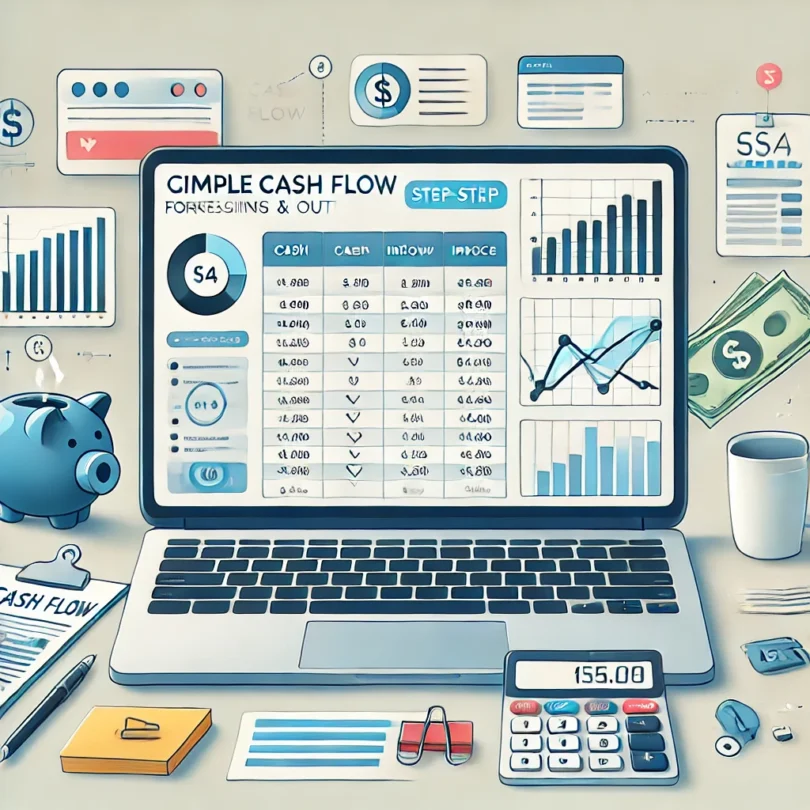For small businesses or companies without the budget to invest in advanced cash flow forecasting tools, building your own solution is a viable option. While it may not have all the bells and whistles of enterprise-grade software, a simple, well-organized tool can still provide substantial value. Here’s how you can get started:
1. Leverage Existing Software
The first step in creating a forecasting tool is to use the software you already have access to. Tools like Microsoft Excel or Google Sheets can serve as the foundation for your forecasting solution. These platforms offer robust features like formulas, pivot tables, and charts to organize and analyze data.
- Set Up a Template: Create a spreadsheet with clear sections for cash inflows (e.g., sales revenue, accounts receivable) and outflows (e.g., payroll, rent, supplier payments).
- Use Formulas: Automate calculations using formulas to sum totals, calculate differences, and project future cash flows.
- Include a Timeline: Organize the data into weekly, monthly, or quarterly columns to track and project cash flow over time.
2. Integrate Data Sources Manually
While advanced tools integrate directly with ERP systems and banks, a DIY tool will likely require manual data entry. However, you can streamline this process:
- Bank Statements: Download bank statements regularly and update your spreadsheet with transaction data.
- Invoices and Bills: Keep records of outstanding invoices and upcoming bills to factor into your forecasts.
Even though this approach requires more effort, consistent updating will provide you with a reliable view of your cash flow.
3. Use Basic Automation Tools
To reduce manual work, leverage basic automation tools that are often free or low-cost:
- Google Sheets Scripts: Use Google Apps Script to automate data imports, generate reports, or send email alerts when cash flow thresholds are crossed.
- Zapier or Make: These tools can help connect different apps (e.g., pulling data from emails, payment systems, or accounting software into your spreadsheet).
This level of automation can bring some of the efficiencies of advanced tools without the expense.
4. Add Basic Predictive Capabilities
While you might not have access to AI-driven predictive analytics, you can create simple predictive features in your tool:
- Historical Analysis: Use historical data to identify trends, such as seasonal spikes or drops in cash flow.
- Scenario Planning: Build “what-if” scenarios into your spreadsheet. For example, project cash flow based on optimistic, realistic, and pessimistic revenue estimates.
- Rolling Forecasts: Update your forecast continuously by adding new data as it becomes available, keeping the tool dynamic and responsive.
5. Focus on Visualization
Visualizing cash flow data helps you and your team quickly understand trends and spot potential issues. Both Excel and Google Sheets offer built-in tools for creating graphs and dashboards:
- Cash Flow Graphs: Use line or bar graphs to visualize inflows, outflows, and net cash flow over time.
- Threshold Indicators: Set up conditional formatting to highlight when cash reserves dip below critical thresholds.
Clear, visual reports will make your homemade tool easier to use and understand.
6. Seek Free or Low-Cost Add-Ons
If your DIY tool needs extra functionality, look for free or affordable add-ons that enhance its capabilities:
- Excel Add-Ins: Tools like Power Query (free with Excel) can help pull and transform data from multiple sources.
- Open-Source Tools: Explore free open-source solutions like GnuCash or other community-built tools that can complement your forecasting efforts.
Creating your own cash flow forecasting tool requires time and effort, but it’s a cost-effective way for small companies to gain control over their finances. By using existing software, automating where possible, and focusing on simplicity, you can build a tool that meets your needs without breaking the bank.
As your business grows, consider gradually transitioning to more advanced solutions to save time and improve accuracy. Until then, a DIY forecasting tool can be a powerful ally in managing your cash flow and ensuring your financial stability.







Leave a Comment
You must be logged in to post a comment.